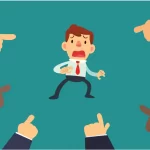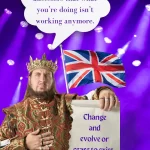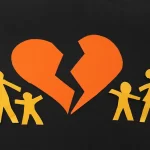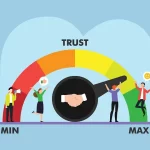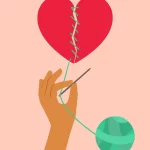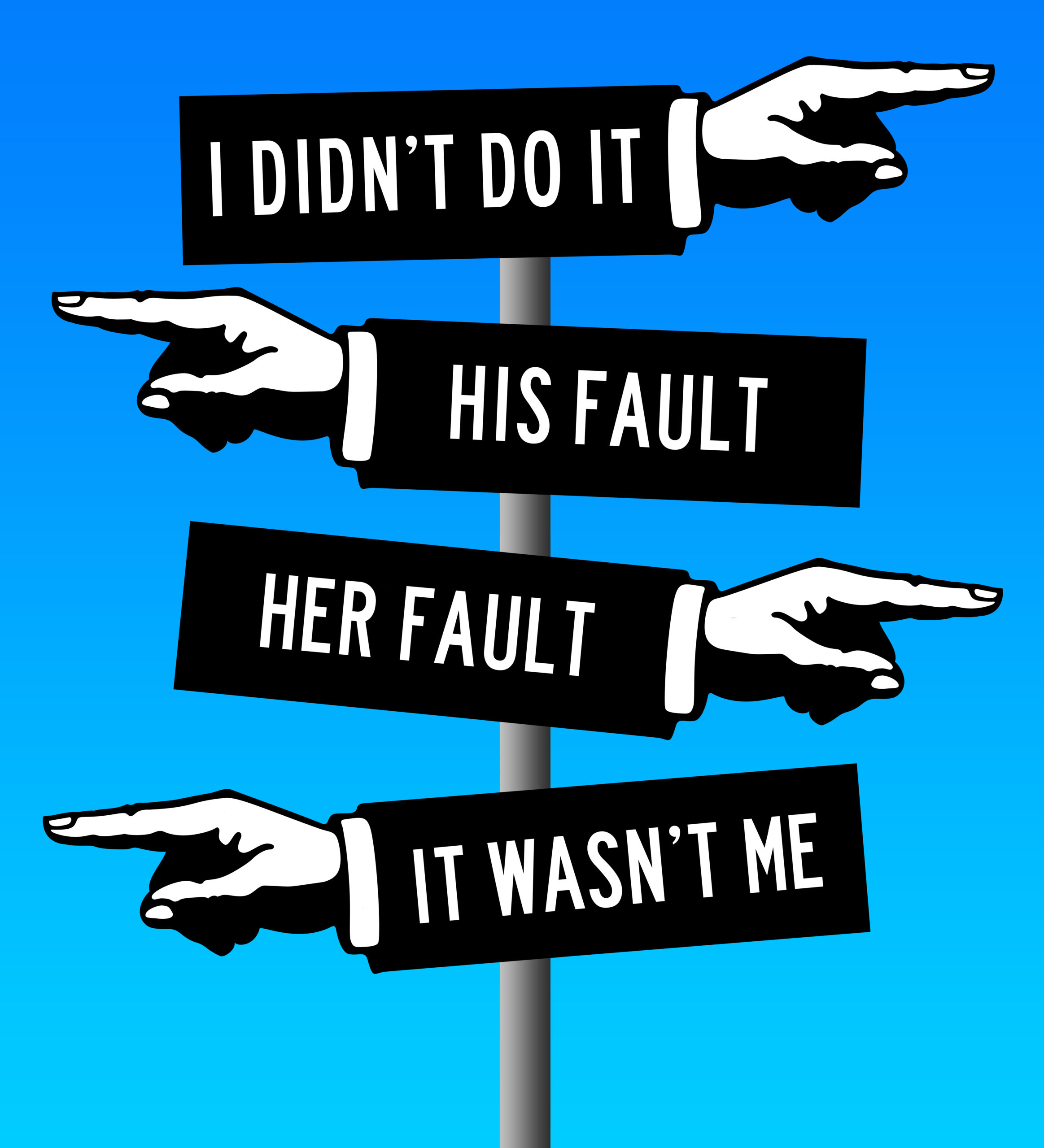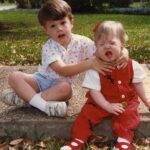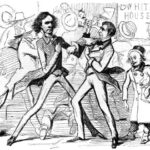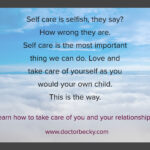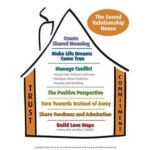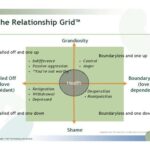
If Your Spouse Wants Out, Do This ….
Avoiding mistakes in a marriage crisis makes a huge difference.
“A marriage crisis begins when an affair is discovered, or one partner says they’re unhappy or want out.”
Becky Whetstone, Ph.D. — America’s Marriage Crisis Manager
If you are part of a couple in a marriage crisis, it is vital to understand a few things: You both are afraid and confused, your nervous systems are activated and in the threat mode, you have little or no idea about what to do, and you’re incapable of thinking and acting rationally. To the outside world, couples in crisis are likely to do things that look crazy.
Now is the time that we must minimize the crazy, making sense of it for both parties — I call them The Decider and the Leaning-in partner. We do this by calming down your nervous system and creating a space for intelligent and rational decision-making.
With that said, I first want to explain the sympathetic nervous system in as simple a way as I can because doing so will help you understand at least 75 percent of the why this and why that questions you might have. Every animal has a nervous system except for blob-like organisms like sponges, jellyfish, coral, and other microscopic things that most of us can’t pronounce. The physical part of the nervous system is the brain, spinal cord, and all the nerves that branch out throughout your body from there. The purpose of the nervous system is to keep living things functioning and alive. An important part of keeping us alive means that the brain is always ready to go on alert to get us out of danger and scans for survival threats four times a second.
When we are calm, our parasympathetic nervous system is in operation. If you think of a stop light, this is when the light is on green — moving through the intersection with ease while listening to easy listening radio. That’s when we do most things required of daily life like eat, sleep, digest, think, shop, learn and more. But when mammals, like human beings, sense a threat, our sympathetic nervous system will fire, or activate, like a rocket on Nasa’s launching pad. With animals like dogs and tigers, the sympathetic nervous system fires when things they hear or see appear to be a potential threat. A dog hears something out in the yard, stiffens and listens to gauge if there is a threat or not, and if it is, it’s off to the races. We’ve all seen film where one animal is chasing another. The animal being chased is experiencing a true threat and is running for its life. You can be sure its sympathetic nervous system is on all systems go.
The Sympathetic Nervous System and Your Marriage Crisis
Thirty seconds before the announcement of unhappiness, Leaning-In partners are in full parasympathetic mode, perhaps even relaxed on the couch looking at their phone with not an immediate care in the world. Green light. The Decider comes in, makes the announcement, and now the Leaning-In person gets activated and goes into a fight response. Red light. The Leaning-in partner’s impulse is to fight for the marriage with all they’ve got to capture The Decider in an imaginary net and pull them back into the marriage. Both The Decider and Leaning-In partners are activated and have entered very dangerous territory where mistakes are made. Neither one’s brain is calm enough to attain common sense or rational thought. Both are now prone to act on impulse.
When the sympathetic nervous system is in full throttle, or activated, things are said that aren’t meant; people lash out, threaten, and harm one another. When my friends and family speak of someone going through a marriage crisis, they may say it appears that person has lost their marbles, but they haven’t. “Forgive them for they know not what they do,” I say, and I mean it. They really aren’t themselves when activated; no one is.
We need to minimize damage at this point. Think of your marriage as a body that is on the floor and bleeding badly. We want the bleeding to stop so we can see if the person can be saved. If we don’t stop the bleeding the person won’t make it. If we can get the bleeding under control, we can see what’s going on, how bad it is, and what we need to do, including what’s possible.
Calming Down to Assess the Situation
This is why it is so important for you to do all you can to come out of activation, to become calm, and to do everything I suggest along the way. Controlling yourself during these days will be the hardest thing you’ve ever done, but you must do it. Everything both of you want depends on it. I will be helping you with suggestions on how to do this below, but for now, use every piece of self-control you must will yourself to take action from the best part of your personality. Remember, a lot is at stake, and you simply must do it.
Things you can do to help yourself come out of activation:
· Splash cold water on your face.
· Take a cold shower.
· Use an icepack on your face and forehead.
· Sleep on your right side.
· Exercise or engage in physical exertion.
· Spend time in nature.
· Meditate. Visualize calming resources that always make you feel better.
· Stay away from negative people, places, and things.
· Use vibration noises such as voooo, owmm, or gargling noises.
· Spend time with a child or pet.
· Engage in a favorite hobby.
· Use touch. Your nervous system responds positively to calming touch, so sold yourself. Put your left hand under your armpit and your right hand on your left shoulder. Also try holding the back of your head, like a mother might hold an infant’s head.
My Favorite Self-Soothing Ritual
Young children have self-soothing techniques to reduce stress — they have lovies, pacifiers, blankies and whatnot that when needed, will do the job of calming them down. Now is a good time to take a cue from them — just because we grew up doesn’t mean we don’t still need self-soothing rituals. For many years I have kept one in my back pocket that works for me every time, and here it is:
Step One: Use physical exertion to release negative energy. I like to get sweaty and dirty, so I may go for a power walk or bike ride in nature, work in the yard pulling up weeds, trimming trees and bushes or detail my car. Before I begin this, I tell my brain, “I am upset about X, and what I’m about to do is to help me release the negative energy I feel about that.” Then I do it. If I don’t have that kind of time, I have a three-foot-long piece of water hose that is about two or three inches in diameter that I beat against a pillow or mattress. I whack, whack and whack while focused on my emotional pain. Pretty soon, my brain tells me I have completed what I was doing it for, and I stop.
Step Two: Following step one, I go home to take a shower or bath, then create a soothing atmosphere …. music, candles, maybe a glass of wine. I put on something warm and comforting, get in bed with some books, magazines or prepare to watch a favorite spirit-lifting movie. Then I fall asleep. My wounded inner child feels totally taken care of and nurtured in these moments.
I suggest you create a similar ritual for yourself that fits you. Think of what a compassionate mother or father might do for her child, then do that for yourself. You will be needing this ritual quite a bit during the coming days, weeks, and months, and I urge you to embrace it.
Understanding the Parts of Our Personality
I keep talking about controlling your behavior during a marriage crisis and how difficult it can be when your sympathetic nervous system is firing. I want to explain more clearly what I’m talking about.
I’m a trauma therapist who has worked with thousands of clients over the years and have never met anyone who doesn’t have childhood developmental trauma. Pia Mellody published a book in 1989 titled Facing Codependence, which showed the world what childhood trauma is and how it happens. I trained with her over three years starting in 2010 and use her powerful theory in my work. I sincerely believe there is nothing else like it for helping people recover, grow up, and be their authentic, best selves.
Pia’s definition of trauma-causing events is “anything that happened in childhood that was less than nurturing.” With criteria like that, you can be sure that all of us were traumatized thousands of times by family, friends, our culture, and all the expectations put on us to conform. What comes from it is the development of toxic shame, the idea that we aren’t good enough, don’t fit in, are defective, and can’t measure up. When people ask me what the number one cause of divorce is, I say, “Toxic shame.” Why? Because no one can have a healthy relationship with anyone if they are full of toxic shame and viewing the world through an I’m not good enough lens. In addition to putting inaccurate negative meanings on things, the toxic shame-filled person beats themselves up regularly. and processes every interaction with the I’m less than or inferior viewpoint. People loaded up with life’s wounds and toxic shame tend to take things personally, have numerous activations when there is a perceived slight, and likely have either an emotional bucket that doesn’t ever seem to get filled up enough by friends and family or have turned off needing and wanting altogether. If you don’t think this applies to you, think again. Even those I’ve met who have a better than or superiority stance have toxic shame lurking on the underbelly. Feeling better than or superior to most others is also a result of childhood trauma. Neither one is conducive to healthy relationships.
Example: Josie’s self-esteem is lesser-than or inferior. Deep inside she feels her husband Jose is too good for her. She tells herself that he doesn’t love her and wishes he could leave her, none of which is true. When she gets home from work one afternoon, she starts slamming cabinet doors and then begins to pout. Jose asks what’s wrong.
”You couldn’t even make time to have lunch with me like I asked, you’d rather be doing anything else!” Jose is astonished.
“What? I had a meeting, sweetheart. I told you I had a lunch meeting with my sales manager. It had nothing to do with you.”
Josie created problems where there were none, because of her toxic shame. Over time, these sorts of interactions wear down husbands like Jose, and it’s all so unnecessary.
Here are the three parts of the personality of any person who took on toxic shame in their childhood, and those who feel superior to most:

Wounded child. (WC) All of us have an inner wounded child within who is hurt, frightened, angry or in some state of emotional pain. Much of the time that part sits at our side quietly, though it stands ready to activate anytime someone says or does something that it perceives as a threat. This part of us resides in the limbic part of our brain where emotions and survival reside. There is no reasoning, done here, only extreme emotions. Josie’s WC was provoked, and she became activated when Jose told her he couldn’t have lunch. She wrongly assumed it was because he didn’t want to spend time with her.
During a marriage crisis a person’s WC will be activated again and again. Both the Leaning-in partner and the Decider feel the emotional pain of becoming activated to the core. What happens once activated is where I am asking both partners to learn to control themselves.
Adult Adapted Child. (AAC). We have an older child self that is the reactor to the emotions that arise in the WC. Think of it as the WC’s protector. When the announcement of marital unhappiness is announced the WC rises in fear or fury, and in individuals who don’t know better, the AAC unleashes it unedited, uncontrolled fight, flight or freeze response. Deciders notoriously flee, while Leaning-in partners are fighting to keep the Decider from leaving. It is right here, in these responses, where damage is done. Why? Because the AAC is an emotional 14 or 15 year old and responds to emotional hurts in an immature fashion. Josie was allowing her AAC to take control of her personality when she was slamming cabinets and pouting. She was passively aggressively letting Jose know he screwed up. Since Jose was falsely accused, he will become frustrated and want to disregard her pain, which will activate Josie even more.
The AAC is immature, punitive, obsessive, and vindictive. Here are things I’ve seen the AAC part of the personality do in response to perceived hurt during a marriage crisis:
· Become verbally, emotionally and/or physically abusive.
· Take money out of bank accounts or close credit cards.
· Threaten to take children away.
· Talk smack about the other person to friends and family members.
· Call the partner’s boss or visit their workplace to cause a scene.
· Stalk.
· Burn their partner’s possessions.
· File for divorce.
· Put the house up for sale.
· Give away a beloved pet.
· Threaten suicide or harm to the other.
· Refuse to respect their partner’s boundaries.
If I could get your WC to stop feeling the emotional pain it no doubt is feeling right now, I would. That pain comes from piles of wounds from many decades of life’s difficulties that the brain has stored in its hard drive. A trauma therapist can help reduce the emotional pain associated with those wounds, but right now you still have them, and they are going to fire up the limbic brain numerous times during this crisis and send you into survival mode. What I am asking you to do is to not let the AAC be the responder. Sure, the first voice you will hear is the AAC telling you to say or do something nasty. Wait a second or two longer and gain access to the functional adult, located in a different part of your brain, the frontal cortex, where a more adult-like and reasonable suggestion can be found. Learning to do this can mean the difference between saving and losing your marriage.
An example of what the AAC might say at the beginning of a marriage crisis is, “Hell no! You aren’t leaving me! I will take the kids, the money, and I’ll go to your job and tell them what you’re doing!” The functional adult might say, “I hear that you’re unhappy enough to want to end the marriage. Of course, I don’t want that, but please give me some time to process this and I’ll speak further to you about this in a day or two.”
Even if you can access your functional adult self, the Leaning-in partner will still feel the pain and fear coming from the WC, and we must tend to it. When mine is feeling that way, I pull up the self-soothing ritual I wrote about earlier. This is my functional adult reaching around and nurturing and taking care of my wounded little girl. It works, and it heals. Allow your functional adult to compassionately parent you while you are feeling vulnerable and lost. It will go a long way to bringing you out of activation and in to making wise decisions. Don’t hesitate to ask yourself, “What would make me feel better right now?” The answer cannot be self or other person destructive, and needs to be something you can provide for yourself as we can’t always count on others to be there for us. Use this tool as often as you need, as people like me in trauma recovery do day in, day out. Learning to nurture yourself is one of the best medicines available, so use it.
The first stage of a marriage crisis is working to stabilize emotions. To bring yourselves out of activation, to slow things down, so you can seek wise counsel and advice and act rationally. This advice will not come from friends, family, and maybe not even a lawyer. Find a Marriage and Family Therapist who knows something about marriage crisis and the divorce decision, then lean on them for their counsel and wisdom. I do this work every day, and it makes a difference in whether couples will make it or not.
Becky Whetstone Cheairs, Ph.D., aka “Doctor Becky,” is dedicated to helping couples make it through marriage crisis without destroying themselves and their families, and is referred to as, “America’s Marriage Crisis Manager.” She writes under the name Becky Whetstone. She is a licensed Marriage and Family Therapist in Arkansas and Texas, and a Licensed Professional Counselor in Arkansas. She has a private practice and sees clients via telehealth and telephone. You can find her on Twitter, Linked In, TikTok, Facebook, Reddit, Instagram and You Tube. Her web sties are www.DoctorBecky.com and www.MarriageCrisisManager.com.

 Becky Whetstone is an Arkansas native and has a Ph.D. in Marriage and Family Therapy from St. Mary’s University in San Antonio, Texas. She is a Licensed Marriage and Family Therapist (LMFT) in Texas and Arkansas.
Becky Whetstone is an Arkansas native and has a Ph.D. in Marriage and Family Therapy from St. Mary’s University in San Antonio, Texas. She is a Licensed Marriage and Family Therapist (LMFT) in Texas and Arkansas. 



